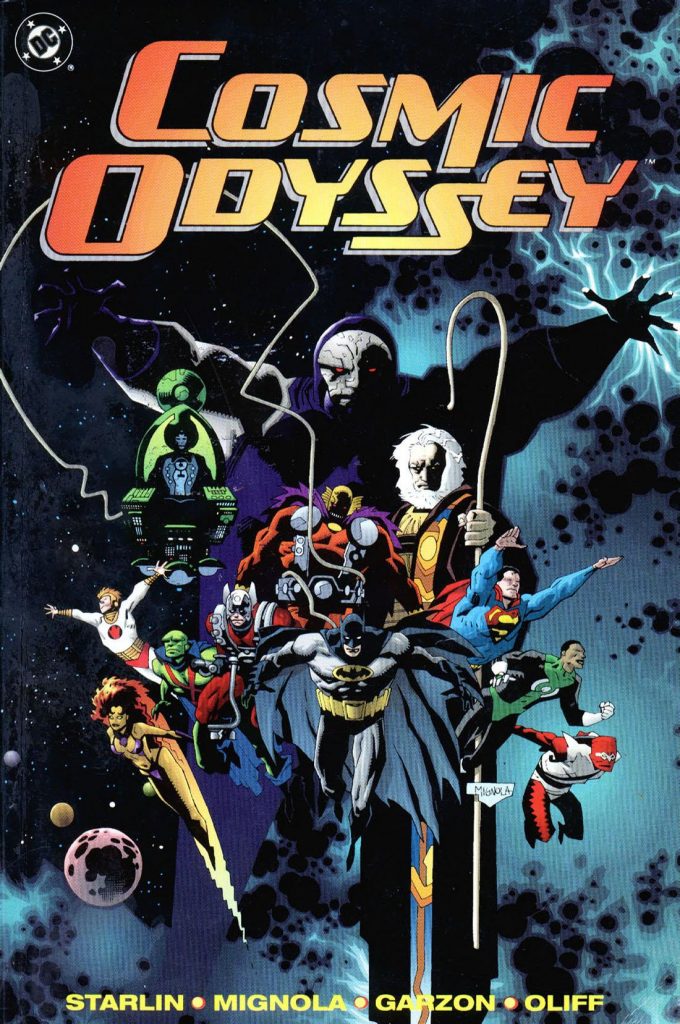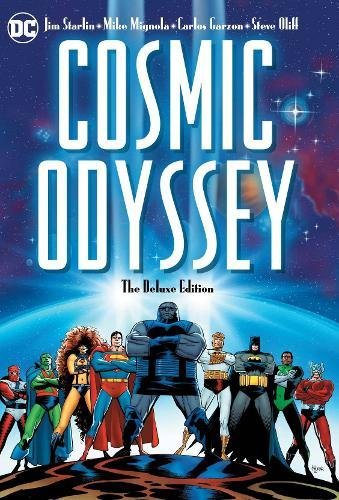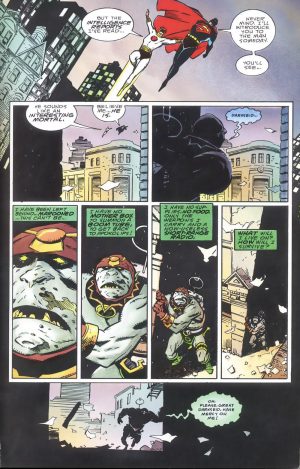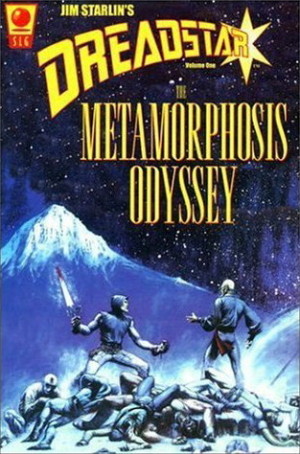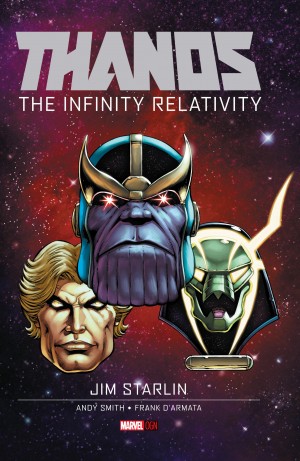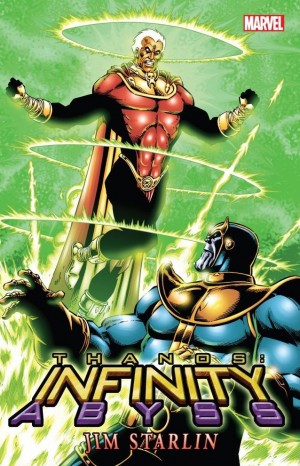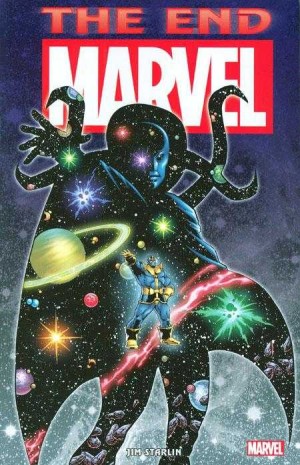Review by Ian Keogh
When Jim Starlin began working for DC it seemed odd that he avoided the science fiction epic he’d produced so memorably elsewhere in favour of other forms of storytelling, but Cosmic Odyssey plays to his undeniable strengths. It builds on characters and concepts introduced by Jack Kirby, with Starlin nailing down the Anti-Life Equation for which Darkseid has been searching. Here he finally discovers the answer, and it’s not to his liking as a threat that will affect him along with his enemies. There’s also the concernm of a menace from elsewhere targeting the universe, having sent aspects of itself to destroy four planets. The known DC universe locations of Earth, Rann and Thanagar are in the firing line, along with the lesser known Xanshi. If any two are destroyed, the universe as we know it will cease to exist. Whew!
From the mid-1980s Mike Mignola had been a competent superhero artist, if not very distinctive, but the originality was there, just needing some coaxing out, and the freedom of the long-form, but self-contained Cosmic Odyssey enabled an opportunity to combine his already strong storytelling skills with some art that drifted away from his known style. The sample page appears early in the story, and it already shows Mignola clearing the clutter, and the figures in the top panel are a guide to his future as he embraces the simple and the jagged. He is experimenting, so not everything works, with an occasionally Kirbyesque Superman standing out as not the best artistic choice.
Following a detailed explanation of the threat, Starlin sends two pairs of superheroes to each threatened planet, then switches the action between them. The most interesting teaming is on Earth, where Batman is allied with the little seen New Genesis resident, Forager.
The basic plot is sound, but minor irritations seep through, such as an excess of expository dialogue, and some predictable aspects. Starlin, however, more than compensates with plenty of surprises along the way, and by instituting hubris as central to events from early in the story. He takes the novel step of showcasing the fallibility, arrogance and overconfidence of the heroes, and repeats that process with greater and lesser consequences. Also good is the alliance of the mystic and the scientific in the last knockings. It’s a technobabble convenience, but it leads to a neat dressing down when the main menace is dealt with. Starlin’s not finished, however, and a series of good epilogues examine the personal consequences of what’s taken place.
There’s a reason Cosmic Odyssey has been a trade paperback in print since the early 1990s. It delivers imaginative widescreen action of a type few creators other than Starlin managed at the time, and if there are misgivings about the personification of a perennial DC unknown, then they’re lost amid the frenetic action pace and the suspense. Along the way Starlin tidies up a few long standing inconsistencies and puzzles, such as why no-one can reach the twin planets of Apokolips and New Genesis. All these years later, it remains a great piece of entertainment.
As part of their reinvigoration programme for classic material, in 2017 DC reissued the story in their Deluxe format. In essence it means larger page size to better appreciate Mignola’s efforts, and hard covers. Don’t expect any extras for the premium price.
